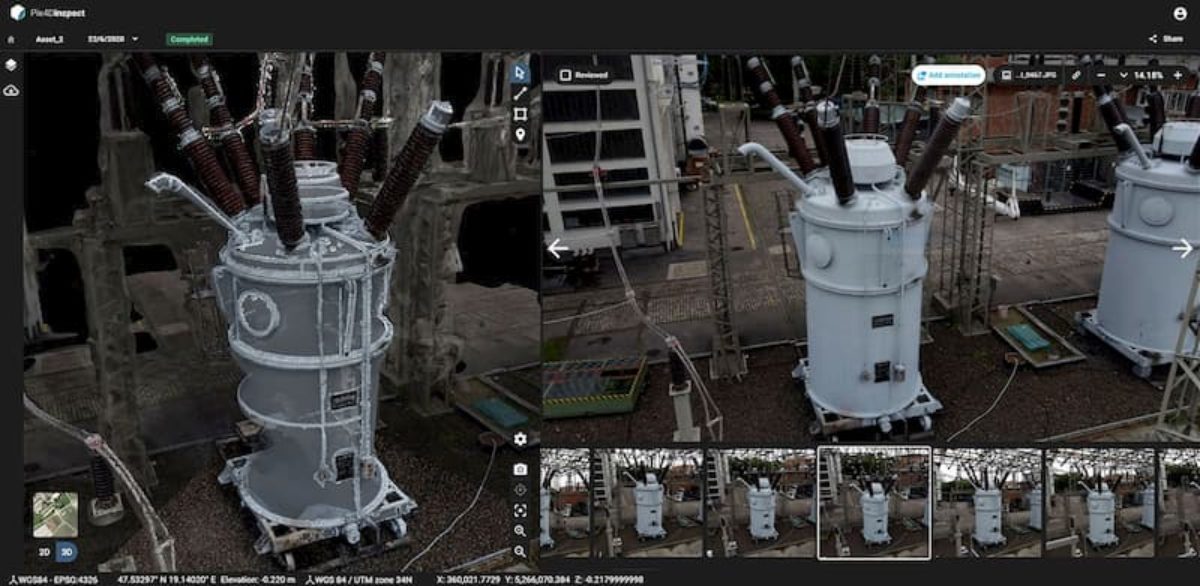Uganda Flying Labs Trains Utility Workers to Use Drones for Safer Inspections
Uganda Electricity Transmission Company Limited (UETCL) is the organization that takes charge of the entire country for electric power transmission. Uganda Flying Labs had an opportunity to address the utility services’ needs to use drones through advanced training. But the COVID-19 pandemic has brought a lot of new dynamics to how we do things, including training.
Before the pandemic, Uganda Flying Labs conducted introductory and intermediate training with the UECTL team, which entailed drone flying and data analysis. The advanced stage was industry-focused content that gave the team deep insight into using drones in tower, line, and substation inspection.
However, as the next training approached, the Uganda Flying Labs team called the responsible parties for the course. We listened to the key personal say: “training is no longer allowed on a one-on-one basis because of the new policies related to the COVID-19 standard operating procedures.” That was the beginning of a new—and unanticipated—method of course delivery for Uganda Flying Labs. We had to make the course interactive and make sure that we included many illustrations and demos to make the course more tangible over Zoom.
The sessions ran for four days, including a refresher on capturing images, some hands-on practice with PIX4D software, and QGIS training for data manipulation. Uganda Flying Labs was joined by a special guest trainer from PIX4D, Gabriele Ruggiero, to take participants through PIX4Dinspect to meet the industry focus needs.

The positive side of hosting online training was that it significantly boosted participation. In addition to the four engineers who previously attended our training, we had eight participants attending remotely. On the first day, we focused on the utility sector’s risks to personnel and how drones can combat those challenges. Topics included:
- Why use drones in an inspection of power transmission and distribution infrastructure?
- Risks that can be assessed with the application of drones; scenarios and use-cases
- Drones and Sensors (UECTL already has an M600 drone; however, for detailed analysis of the utility industry, we felt compelled to also introduce the M300 with RTK).
- Inspections Results and Reporting
It was also important for the class to understand the power utility industry’s risks, as illustrated below.

The training was a mix of lectures, videos and demos, and hands-on. As much as we had emphasized the computers’ specification that could be efficient, we had a setback with some participants’ data taking longer to process. However, it was a learning opportunity for the participants to troubleshoot the computers’ specifications.

The other areas that were covered were identifying land use invasion, obstacle, power line integrity measurements, power line point cloud modeling using data from data captured in the intermediate course, power line inspection, and manipulation of data open software considering that were already familiar to it from the previous training. The presentations and demos of the use of software applications were engaging. Using real images from the field allowed participants to relate the course to their work, especially in pylon and voltage controller inspections.

Ultimately, the course balanced content between technical and social matters regarding drone use for decision-making in the power utility industry. It was a learning experience for both trainers and trainees as we embraced online learning. One of the amusing observations was that when we had narrative lectures, there was the dead silence of the other end, contrary when we had a hand on and demos questions streamed in. That was enough to give evaluation feedback of what sparked the interest of the audience, especially on topics covering:
- Image Capture
- 3D Processing
- AI and ML
- Asset Management
By the end of the training, what looked like a vast mountain had been demystified due to great efforts made by all parties involved in the training.



